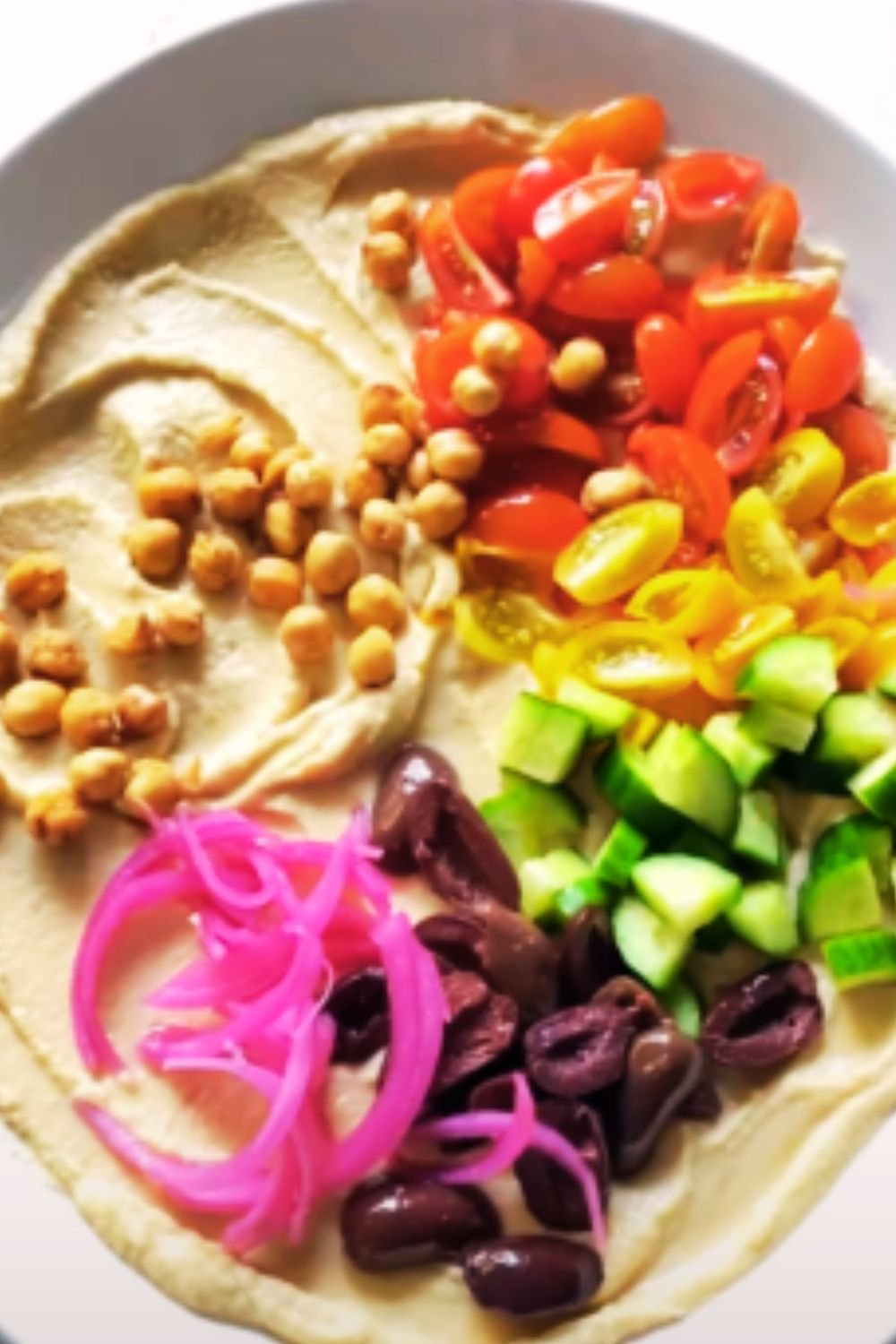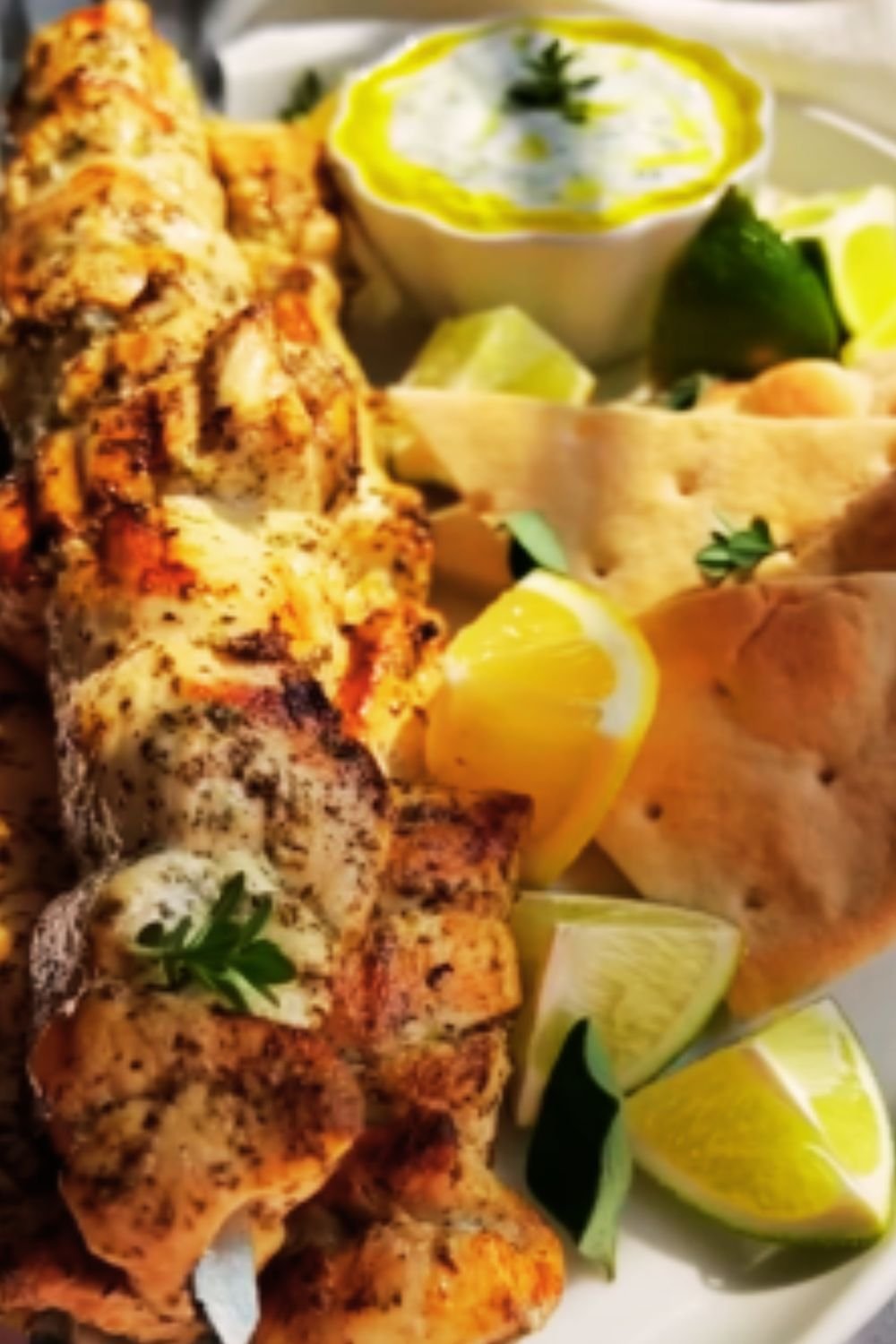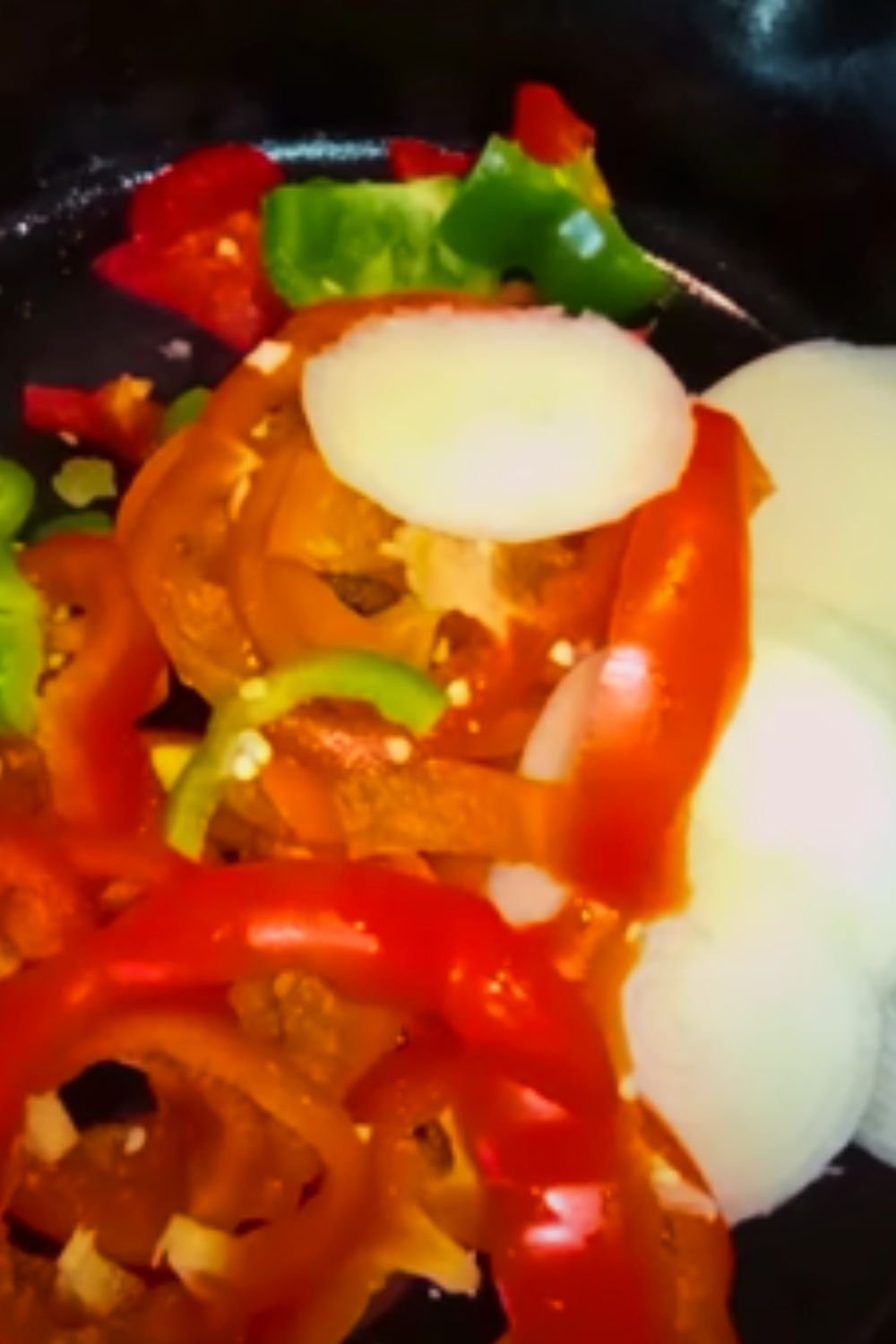I’ve been making hummus for over a decade, and I can confidently say that loaded hummus has revolutionized my approach to this beloved Middle Eastern staple. What started as a simple chickpea dip has evolved into a canvas for creativity, transforming ordinary hummus into an extraordinary meal that satisfies both vegetarians and meat-lovers alike.
The beauty of loaded hummus lies in its versatility and visual appeal. When I first discovered this concept, I realized that hummus could be so much more than just a dip – it could become the star of the show, the centerpiece of a meal that brings people together around the table.
Understanding Loaded Hummus
Loaded Hummus: A enhanced version of traditional hummus that serves as a base for various toppings, creating a complete, visually stunning, and nutritionally balanced meal served in a bowl or on a platter.
Traditional Hummus: The classic Middle Eastern dip made from chickpeas, tahini, olive oil, lemon juice, and garlic, served plain or with minimal garnish.
Mediterranean Bowl: A serving style that combines hummus with fresh vegetables, proteins, and various Mediterranean-inspired ingredients arranged aesthetically in a bowl.
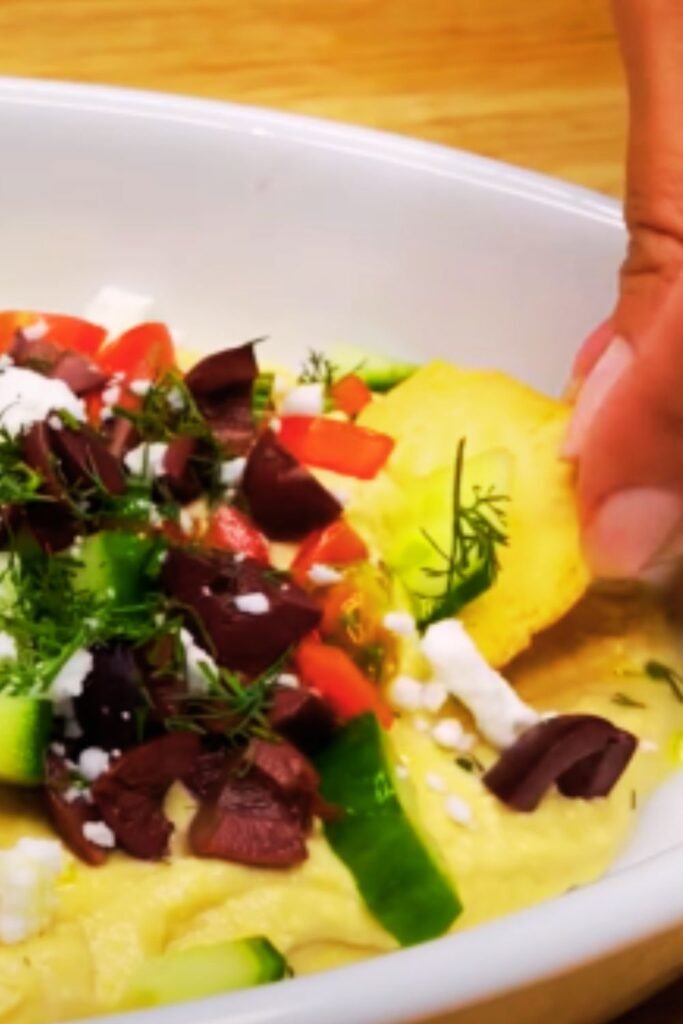
The concept of loaded hummus emerged from the growing trend of bowl meals and the desire to make traditional Middle Eastern foods more substantial and Instagram-worthy. I’ve noticed that restaurants and home cooks alike have embraced this approach because it allows for endless customization while maintaining the authentic flavors we all love.
The Foundation: Perfect Hummus Base
Creating exceptional loaded hummus starts with mastering the base. I’ve experimented with countless variations, and I’ve learned that the quality of your hummus determines the success of the entire dish. My approach focuses on achieving the perfect texture and flavor balance that can support various toppings without being overshadowed.
The key to restaurant-quality hummus lies in the preparation of chickpeas. I always recommend using dried chickpeas that you cook yourself, though high-quality canned chickpeas work well too. The secret I’ve discovered is removing the skins from the chickpeas – this extra step creates an incredibly smooth, creamy texture that makes all the difference.
When I make my base hummus, I focus on achieving the perfect consistency. Too thick, and it won’t spread nicely in the bowl; too thin, and it won’t hold the toppings properly. I’ve found that the ideal consistency should be smooth enough to spread with the back of a spoon but substantial enough to create valleys and peaks that hold other ingredients.
Essential Ingredients for Base Hummus
| Ingredient | Quantity | Purpose | Quality Tips |
|---|---|---|---|
| Chickpeas | 2 cups cooked | Primary base | Use dried chickpeas for best texture |
| Tahini | 1/4 cup | Creaminess and flavor | Buy from Middle Eastern stores |
| Lemon Juice | 3-4 tablespoons | Acidity and brightness | Fresh-squeezed only |
| Garlic | 2-3 cloves | Aromatic base | Remove green germ for milder flavor |
| Olive Oil | 2-3 tablespoons | Richness and smoothness | Extra virgin, cold-pressed |
| Cumin | 1/2 teaspoon | Earthy warmth | Freshly ground preferred |
| Salt | To taste | Flavor enhancement | Sea salt or kosher salt |
| Ice Water | 2-4 tablespoons | Texture adjustment | Helps achieve perfect consistency |
Classic Loaded Hummus Combinations
Through my years of experimentation, I’ve developed several go-to combinations that never fail to impress. Each combination offers a different flavor profile and visual appeal, making loaded hummus suitable for various occasions and dietary preferences.
Mediterranean Loaded Hummus
This combination represents my interpretation of classic Mediterranean flavors. I start with a smooth hummus base and create a landscape of colors and textures that transport you straight to the Greek islands.
The beauty of this version lies in its simplicity and the quality of ingredients. I arrange cherry tomatoes, cucumber, red onion, Kalamata olives, and crumbled feta cheese over the hummus base. The key is in the arrangement – I don’t just scatter the ingredients randomly; I create sections that allow each component to shine while complementing the others.
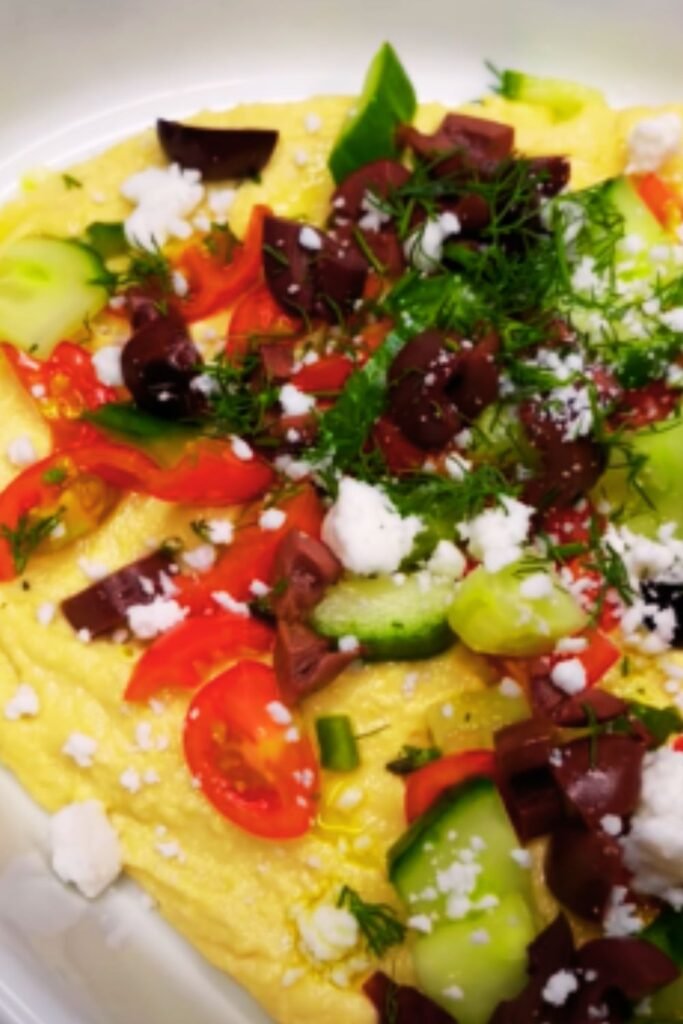
Fresh herbs play a crucial role in this combination. I always finish with chopped parsley, oregano, and a sprinkle of za’atar. The herbs not only add freshness but also provide that authentic Mediterranean aroma that makes the dish irresistible.
Protein-Packed Loaded Hummus
For those seeking a more substantial meal, I’ve developed protein-focused variations that transform hummus into a complete, satisfying dinner. My favorite includes seasoned ground lamb or beef, but I’ve also created vegetarian versions using seasoned lentils or chickpeas.
When I prepare the meat version, I season ground lamb with Middle Eastern spices – cumin, coriander, cinnamon, and allspice. I cook it until it’s beautifully browned and aromatic, then arrange it over the hummus along with fresh vegetables and herbs.
The vegetarian protein version uses roasted chickpeas seasoned with similar spices, providing the same satisfying texture and flavor profile without the meat. I’ve found that both versions are equally popular among my guests.
Advanced Topping Strategies
Creating visually stunning loaded hummus requires understanding how to layer flavors and textures effectively. I’ve developed techniques that ensure each bite contains a perfect balance of the creamy base, crunchy elements, fresh components, and aromatic herbs.
Texture Contrast Matrix
| Base Layer | Crunchy Elements | Fresh Components | Aromatic Finishes |
|---|---|---|---|
| Smooth hummus | Toasted pine nuts | Cherry tomatoes | Fresh herbs |
| Chunky hummus | Crispy chickpeas | Cucumber | Za’atar blend |
| Flavored hummus | Pita chips | Red onion | Sumac |
| Whipped hummus | Toasted seeds | Bell peppers | Dried mint |
The secret to professional-looking loaded hummus lies in the arrangement. I always start by spreading the hummus in a shallow bowl, creating natural valleys with the back of a spoon. These valleys become pockets for holding different toppings, preventing everything from sliding around.
I’ve learned that color distribution is crucial. Instead of clustering similar-colored ingredients together, I distribute them evenly around the bowl. This creates visual interest from every angle and ensures that each serving contains a variety of components.
Temperature and Timing Considerations
One aspect that many home cooks overlook is the temperature of components. I serve my loaded hummus at room temperature, but I’ve discovered that certain toppings benefit from different temperature treatments.
Warm proteins, such as seasoned ground meat or roasted vegetables, should be added just before serving to prevent the hummus from becoming too warm. Cold components like fresh vegetables and cheese can be prepared in advance and kept chilled until assembly.
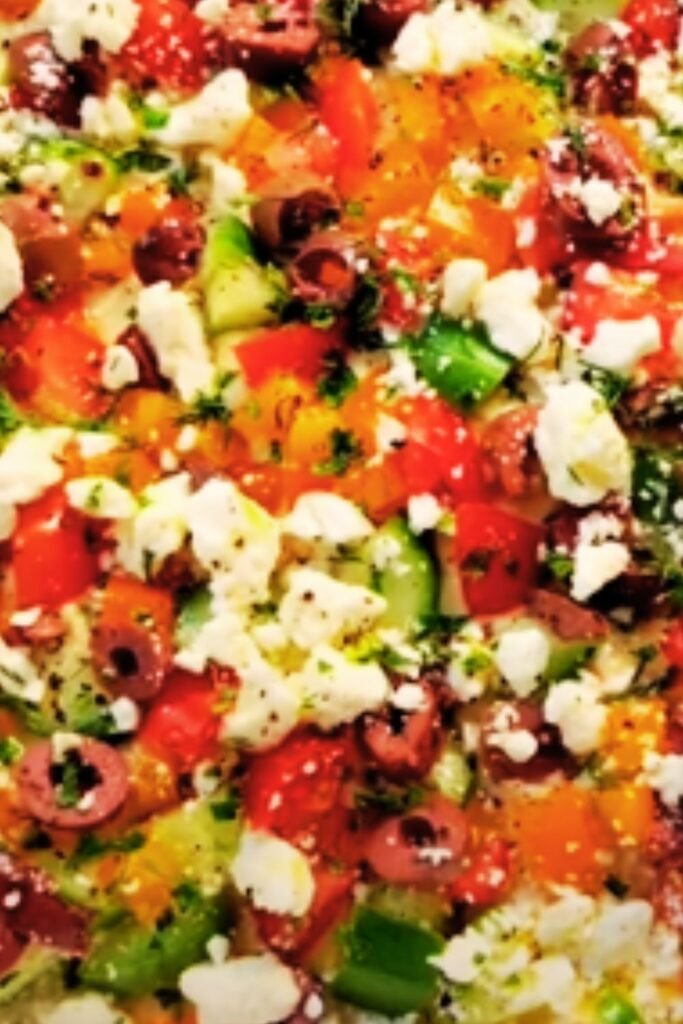
Seasonal Variations and Adaptations
My approach to loaded hummus changes with the seasons, allowing me to incorporate the best available ingredients while keeping the dish exciting throughout the year. Each season offers unique opportunities to create memorable combinations.
Spring Loaded Hummus
Spring brings fresh peas, asparagus, and tender herbs that I love incorporating into loaded hummus. I blanch snap peas and asparagus tips, keeping them bright green and slightly crisp. Fresh mint, dill, and chives add brightness that perfectly complements the creamy base.
During spring, I also like to add edible flowers when available. Nasturtiums and pansies not only look beautiful but add a subtle peppery flavor that enhances the overall experience.
Summer Loaded Hummus
Summer is the season for bold, fresh flavors. I take advantage of peak tomato season, using a variety of heirloom tomatoes in different colors and sizes. Corn kernels, either raw or lightly charred, add sweetness and texture.
I’ve found that summer loaded hummus benefits from more acidic components to balance the richness. I increase the lemon juice in the base and add pickled vegetables or a splash of pomegranate molasses for extra tang.
Fall and Winter Adaptations
Cooler months call for heartier, more warming combinations. I incorporate roasted root vegetables, dried fruits, and warming spices. Roasted butternut squash, pomegranate seeds, and toasted walnuts create a combination that feels appropriate for the season while maintaining the Mediterranean character.
Nutritional Benefits and Dietary Adaptations
One of the reasons I’m so passionate about loaded hummus is its incredible nutritional profile. The chickpea base provides plant-based protein and fiber, while the various toppings contribute essential vitamins, minerals, and healthy fats.
Nutritional Breakdown of Loaded Hummus Components
| Component | Primary Nutrients | Health Benefits | Serving Size |
|---|---|---|---|
| Chickpeas | Protein, Fiber, Folate | Blood sugar control, heart health | 1/2 cup cooked |
| Tahini | Healthy fats, Calcium | Bone health, satiety | 2 tablespoons |
| Olive Oil | Monounsaturated fats | Heart health, anti-inflammatory | 1 tablespoon |
| Fresh Vegetables | Vitamins, Minerals, Antioxidants | Overall health, disease prevention | 1 cup mixed |
| Herbs and Spices | Antioxidants, Phytonutrients | Anti-inflammatory, digestive health | 1-2 tablespoons |
I’ve successfully adapted loaded hummus for various dietary requirements without compromising flavor or visual appeal. For those following a keto diet, I reduce the chickpeas and increase the tahini and olive oil content. I also incorporate more low-carb vegetables like radishes, bell peppers, and leafy greens.
Gluten-Free Considerations
Loaded hummus is naturally gluten-free, making it an excellent option for those with celiac disease or gluten sensitivity. However, I always remind people to check that their tahini and spices haven’t been cross-contaminated during processing.
When serving, I provide gluten-free alternatives to pita bread, such as vegetable chips, rice crackers, or simply encourage eating with a spoon as a complete meal.
Storage and Make-Ahead Tips
One of the practical advantages of loaded hummus is that many components can be prepared in advance. I’ve developed a system that allows me to create impressive loaded hummus platters with minimal last-minute preparation.
The hummus base can be made up to three days in advance and stored in the refrigerator. I’ve found that the flavors actually improve after a day, as the garlic mellows and all the ingredients meld together. Before serving, I let it come to room temperature and give it a quick stir.
Fresh vegetables can be prepared several hours in advance. I cut tomatoes, cucumbers, and peppers and store them separately in the refrigerator. This prevents them from releasing moisture that could make the hummus watery.
Storage Guidelines for Components
| Component | Storage Method | Duration | Quality Notes |
|---|---|---|---|
| Hummus Base | Refrigerated, covered | 3-5 days | Flavor improves after 24 hours |
| Cut Vegetables | Refrigerated, separate containers | 1-2 days | Pat dry before use |
| Cooked Proteins | Refrigerated, covered | 2-3 days | Reheat before serving |
| Fresh Herbs | Refrigerated in damp paper towel | 3-5 days | Chop just before serving |
| Nuts and Seeds | Room temperature, airtight | 1 week | Toast before serving for best flavor |
Serving Suggestions and Presentation
The presentation of loaded hummus can make the difference between a simple meal and a memorable dining experience. I’ve learned that the vessel you choose affects both the visual impact and the practical aspects of serving.
For intimate gatherings, I prefer individual bowls that allow each person to customize their toppings. For larger groups, a single large platter creates a stunning centerpiece that encourages sharing and conversation.
I always provide appropriate utensils for serving. Small spoons for the hummus, tongs for larger toppings, and small bowls for items like olives or nuts that guests might want to add gradually.
Accompaniment Options
While loaded hummus can certainly be a complete meal on its own, I often serve it with complementary items that enhance the experience:
- Warm pita bread or naan
- Fresh vegetable sticks for dipping
- Stuffed grape leaves
- Tabbouleh or fattoush salad
- Roasted vegetable medley
- Herbed rice or quinoa
These accompaniments allow guests to create their own Mediterranean feast, with loaded hummus as the centerpiece.
Troubleshooting Common Issues
Through years of making loaded hummus, I’ve encountered and solved various challenges that home cooks often face. Understanding these common issues helps ensure consistent success.
Texture Problems
The most common issue I see is grainy or separated hummus. This usually results from not processing the ingredients long enough or not achieving the right balance of liquids. I always process my hummus for at least 3-4 minutes, stopping occasionally to scrape down the sides.
If the hummus becomes too thick, I add ice water one tablespoon at a time while processing. The ice water helps achieve the perfect consistency without making the hummus too thin.
Flavor Balance Issues
Bland hummus is often the result of underseasoning or using low-quality ingredients. I taste and adjust seasoning multiple times during preparation, keeping in mind that flavors will develop as the hummus sits.
Too much garlic can overpower the dish, especially if it’s raw. I sometimes blanch garlic cloves briefly to mellow their intensity, or I use roasted garlic for a sweeter, more complex flavor.
Advanced Techniques and Professional Tips
After years of perfecting my loaded hummus technique, I’ve developed several professional-level methods that elevate the dish beyond typical homemade versions.
Creating Restaurant-Quality Texture
The secret to ultra-smooth hummus lies in the order of operations. I process the tahini and lemon juice first, creating an emulsion before adding other ingredients. This technique, which I learned from a Lebanese chef, creates a lighter, fluffier texture that holds toppings beautifully.
I also use the ice water method – adding small amounts of ice water while processing creates steam that helps break down the chickpeas further, resulting in an incredibly smooth texture.
Flavor Layering Techniques
Professional chefs understand that flavor should build in layers, and I apply this principle to loaded hummus. I create different flavored hummus bases – roasted red pepper, herb-infused, or spiced versions – that complement specific topping combinations.
For herb-infused hummus, I blend fresh herbs directly into the base rather than just using them as garnish. This creates depth of flavor that permeates every bite.
Questions and Answers
Q. How far in advance can I prepare loaded hummus for a party?
I recommend preparing the hummus base up to three days in advance, as the flavors actually improve with time. Cut vegetables can be prepared the morning of your event, but I suggest assembling the final dish no more than 2 hours before serving to maintain the best texture and appearance. Store each component separately and assemble just before your guests arrive for the most impressive presentation.
Q. What’s the best way to achieve perfectly smooth hummus without a food processor?
While a food processor creates the smoothest results, I’ve successfully made creamy hummus using a high-powered blender or even an immersion blender. The key is to warm the chickpeas slightly and remove as many skins as possible. Add liquids gradually and blend in small batches if necessary. For the smoothest texture, pass the mixture through a fine-mesh sieve after blending.
Q. Can I make loaded hummus vegan while keeping it protein-rich?
Absolutely! Traditional hummus is already vegan, and I create protein-rich toppings using seasoned lentils, roasted chickpeas, hemp seeds, or tahini-based sauces. Quinoa tabbouleh, edamame, and various nuts and seeds also boost the protein content significantly. I often combine multiple plant-based proteins to create a complete amino acid profile.
Q. How do I prevent my loaded hummus from becoming watery when using fresh tomatoes?
I’ve solved this issue by salting diced tomatoes and letting them drain in a colander for 15-20 minutes before adding them to the hummus. Pat them dry with paper towels before arranging on top. Alternatively, I use cherry tomatoes cut in half, which release less moisture, or I incorporate sun-dried tomatoes for intense flavor without excess liquid.
Q. What’s the ideal consistency for hummus that will hold toppings well?
The perfect consistency should be smooth enough to spread easily but thick enough to create valleys and peaks that hold toppings without everything sliding to the center. I describe it as being similar to thick Greek yogurt – it should hold its shape when spooned but not be so thick that it’s difficult to eat. Adding ice water gradually while processing helps achieve this perfect balance.
Q. How can I make my loaded hummus more visually appealing for entertaining?
I focus on color contrast and height variation when arranging toppings. I use the back of a spoon to create natural valleys in the hummus base, then arrange colorful ingredients in sections rather than scattering them randomly. Adding height with items like halved cherry tomatoes or rolled cucumber ribbons creates visual interest. Fresh herbs and a drizzle of high-quality olive oil always make the final presentation more professional-looking.
Q. Are there any ingredients I should avoid combining with hummus?
While hummus is incredibly versatile, I avoid overly wet ingredients that can make the dish soggy, such as fresh salsa or very juicy fruits. I also don’t recommend combining too many strong flavors that compete with each other – it’s better to choose a theme and stick with complementary ingredients. Very delicate herbs like basil can wilt quickly, so I add them just before serving.
Q. How do I adapt loaded hummus for different dietary restrictions?
For keto diets, I reduce the chickpeas and increase tahini and olive oil, focusing on low-carb vegetable toppings. For nut-free versions, I substitute sunflower seed butter for tahini and avoid nuts in toppings. For those avoiding legumes, I create “hummus” using cauliflower or zucchini as the base, though the texture differs significantly. Each adaptation requires adjusting seasonings to maintain flavor balance.

